In today’s digital age, online reviews are a powerful force that can either catapult your business to success or leave it struggling in the shadows. Online reviews have become the modern equivalent of word-of-mouth recommendations, guiding customers in their choices of where to shop, dine, or seek services. While positive reviews can do wonders for your business, there are times when managing Google reviews requires you to consider the option of turning them off. In this comprehensive guide, we’ll delve into the significance of online reviews, understand when it’s wise to disable Google reviews, provide a detailed guide on how to do it, explore alternative strategies, and recommend tools and plugins to help you master the art of online reputation management.
Understanding the Role of Online Reviews

Online reviews have transformed into the digital credentials of businesses. They provide potential customers with a treasure trove of insights into the quality of products or services, helping them make informed decisions. Positive reviews are particularly invaluable as they have the power to significantly enhance a business’s reputation and build trust.
Real-World Example: Amazon’s Review System
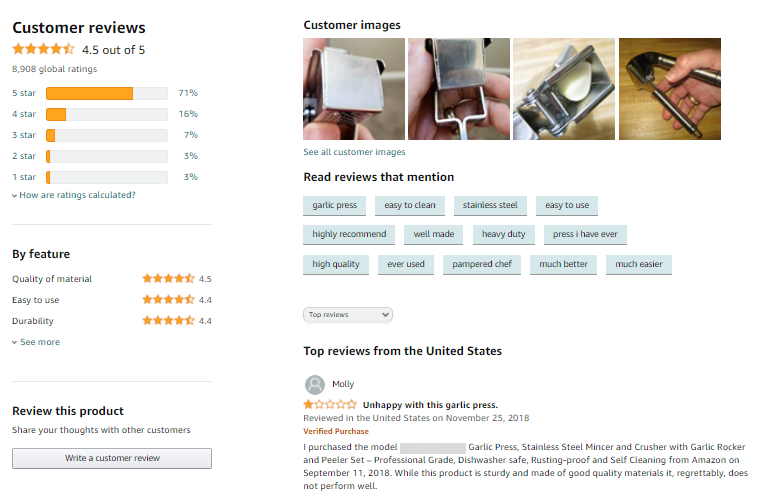
Consider Amazon, the e-commerce giant known for its extensive product listings and a comprehensive review system. Positive reviews often serve as the tipping point for potential customers, influencing their purchasing decisions. This robust review system has played a crucial role in Amazon’s immense success.
Real-World Example: TripAdvisor – Travel Reviews and Information
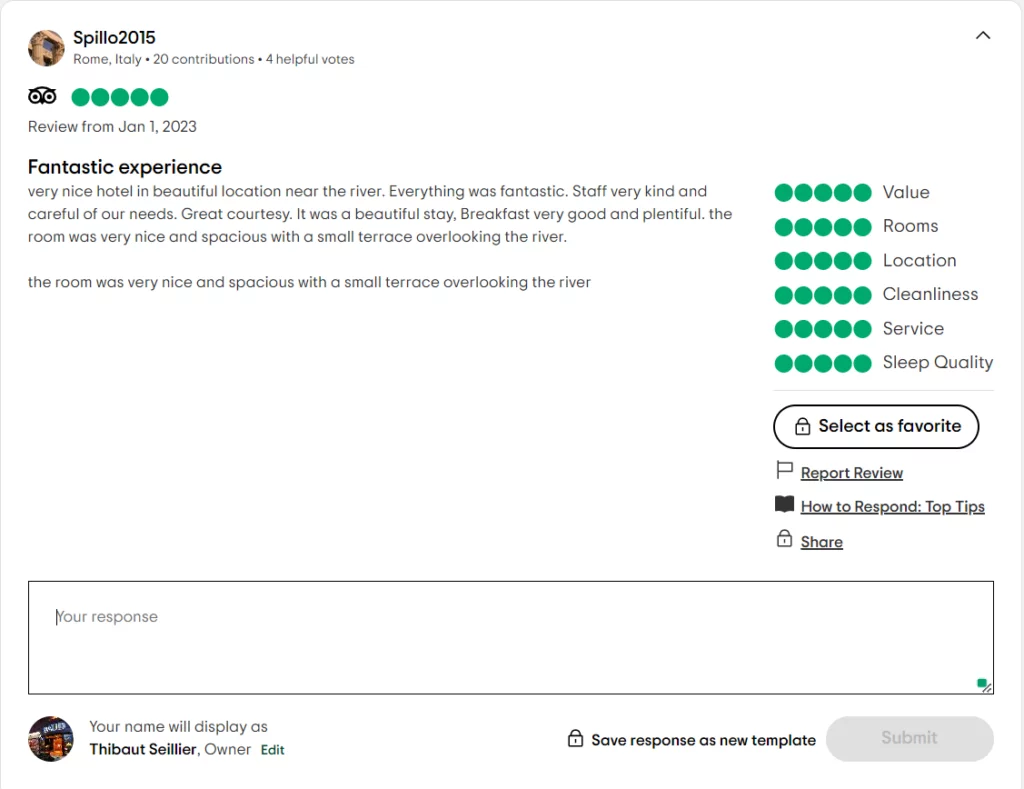
Take TripAdvisor, for instance, a travel platform that exemplifies how reviews can reshape an entire industry. Its extensive database of hotel and restaurant reviews has revolutionized travel planning. Positive reviews on TripAdvisor translate to more bookings and establish higher trust for the businesses listed on their platform.
When Turning Off Google Reviews Makes Sense
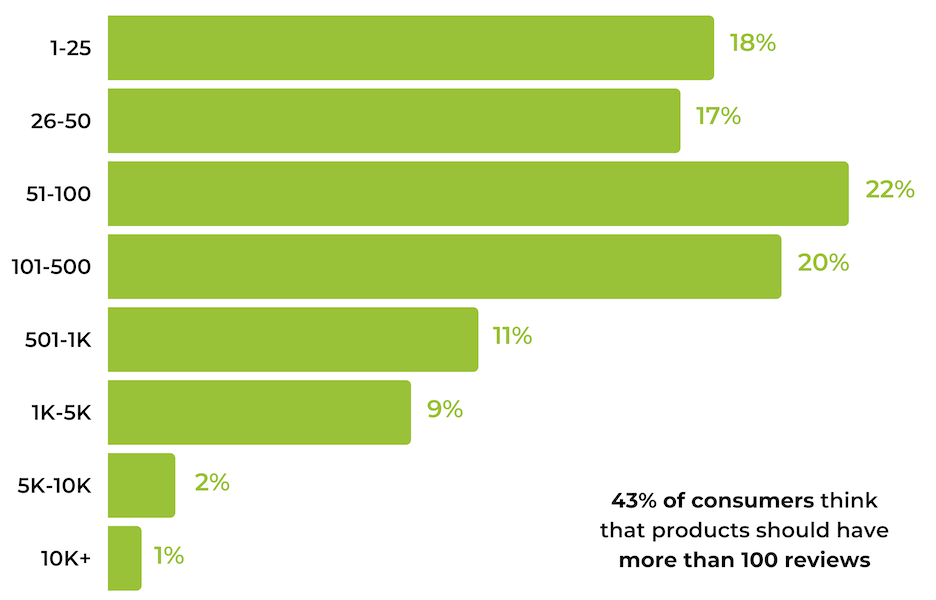
While online reviews are generally a valuable asset for businesses, there are instances where the sheer volume of feedback, whether genuine or not, prompts businesses to consider disabling Google reviews. This is often done to protect their reputation from harmful and misleading reviews.
Situations That Call for Review Disabling
- Influx of False Reviews:

A business might consider disabling reviews when it faces a sudden influx of fraudulent reviews aimed at tarnishing its reputation. These fake reviews can damage a business’s credibility and mislead potential customers.
2. Malicious Spam Attacks:

In some unfortunate cases, businesses become targets of malicious entities that employ automated tools to flood their review sections with spam content. This deluge of spam reviews can clutter the review space, making it difficult for genuine customer feedback to shine through. Temporarily disabling reviews can act as a preemptive measure against such attacks.
3. Inappropriate or Off-Topic Content:

Reviews that contain content unrelated to the business or are deemed inappropriate can be detrimental. They not only mislead potential customers but also harm a business’s reputation by cluttering the review space with irrelevant information.
Real-World Example: TripAdvisor‘s Robust Review Moderation
TripAdvisor, a well-known travel platform, has a robust review moderation system. They actively monitor and remove reviews that contain inappropriate or off-topic content. This approach ensures the quality and relevance of the reviews on their platform.
In these situations, temporarily disabling Google reviews can help businesses regain control over their online reputation and protect themselves from potential damage caused by fraudulent, spammy, or irrelevant reviews. However, this should be a strategic and temporary decision, as permanently turning off reviews can have its own set of consequences.
How to Turn Off Google Reviews
When the need arises to disable Google reviews, it’s important to approach the process systematically. The steps for doing so are relatively straightforward, but the specific procedure can vary depending on whether you manage your business through Google My Business or another platform. Here’s a step-by-step guide:
1. Log into Google My Business:
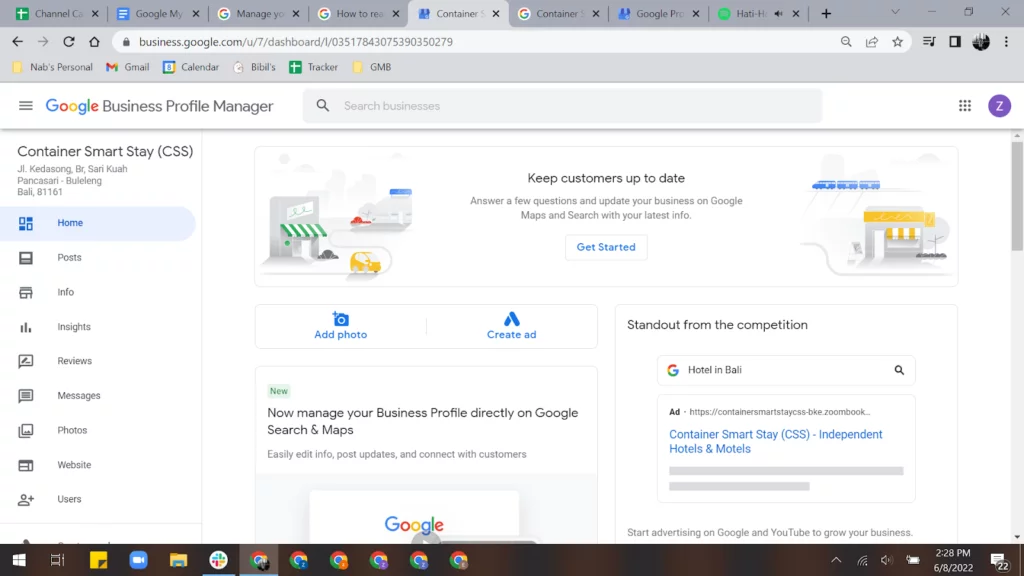
If you’re using Google My Business, the first step is to log into your account. This will give you access to the tools and settings you need to manage your reviews.
2. Access the “Reviews” Section:

In your Google My Business dashboard, you’ll find a “Reviews” section. Click on it to navigate to the area where you can manage your reviews.
3. Select the Review to Disable:

It’s important to note that you can disable individual reviews, but you cannot turn off the entire review section. Choose the specific review that you wish to disable.
4. Flag the Review:
To start the process of disabling the review, click on the flag icon located next to the review you want to report. This action will open a dialogue box that allows you to report the review to Google. In this report, you’ll specify your concerns regarding the review.
5. Choose the Reason for Flagging:

Indicate the reason for flagging the review. You’ll typically be asked to choose from a set of predefined reasons, which might include concerns about authenticity, inappropriate content, or other issues. Select the most relevant reason based on the nature of the review.
6. Submit the Report:

After selecting the reason for flagging the review, submit the report to Google. The review will then be reviewed by Google’s moderation team. They will assess the report, evaluate it against their policies, and make a decision regarding the removal of the review.
More on Managing Google Reviews
Real-World Example: Tesla’s Review Management
Tesla, the prominent electric car manufacturer, has had its fair share of negative reviews, often related to the perceived high price of their products. However, the company has adopted a proactive approach to manage its online presence. Tesla responds to both positive and negative feedback, demonstrating its commitment to customer satisfaction. This not only addresses specific concerns raised in reviews but also shows potential customers that the company values their opinions and strives for excellence in its products and services.
Effective review management can be a powerful tool for maintaining a positive online reputation, as demonstrated by Tesla’s approach.
Now, while turning off reviews can be a valid strategy in certain circumstances, it’s crucial to consider the potential consequences of this action, as explored in the next section.
More on Tesla’s Approach to Customer Feedback
Alternatives to Turning Off Reviews
While disabling Google reviews can be an option in specific situations, it should be regarded as a last resort. Businesses should explore several alternatives that encompass proactive strategies for managing their online reputation, responding to negative feedback, and considering professional reputation management services.
1. Proactive Review Management
Engaging with reviews, both positive and negative, demonstrates a commitment to customer satisfaction and allows businesses to address concerns transparently. Proactive review management can lead to improved trust and credibility.
Real-World Example: Airbnb‘s Review Response

Airbnb actively encourages both hosts and guests to leave reviews, fostering a culture of mutual feedback. What sets Airbnb apart is its meticulous approach to managing their reputation by responding to feedback. This active engagement not only showcases their dedication to improving user experiences but also enhances trust in their platform. By consistently addressing reviews and taking corrective actions where necessary, Airbnb reinforces its commitment to customer satisfaction.
More on Airbnb’s Review Guidelines
2. Improving Customer Service
Addressing the root causes of negative reviews is often a more sustainable approach than turning off reviews. By focusing on enhancing customer service, businesses can reduce negative feedback and elevate their online reputation.
Real-World Example: Zappos‘ Legendary Customer Service

Zappos, a well-known online shoe and clothing retailer, has earned a reputation for exceptional customer service. Their commitment to prioritizing customer satisfaction and going above and beyond to meet customer needs has made them a prime example of how exceptional service translates to positive customer reviews. By consistently delivering top-notch service, Zappos has cultivated an outstanding reputation.
More on Zappos’ Customer Service Philosophy
3. Tools and Plugins for Managing Google Reviews
Efficiently managing Google reviews necessitates the use of appropriate tools and plugins that enable businesses to monitor and respond to reviews promptly. These resources offer a proactive approach to review management, ensuring that your online reputation remains favorable.
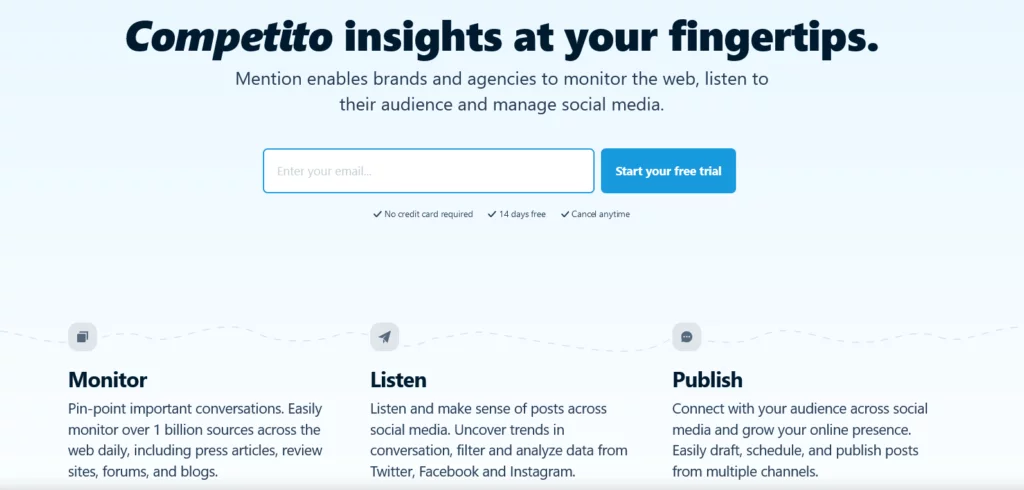
Mention is a robust online monitoring tool designed to track mentions of your brand and products across the web, including social media and various review platforms. It provides real-time alerts for new reviews and mentions, empowering businesses to respond promptly and engage with their audience effectively.
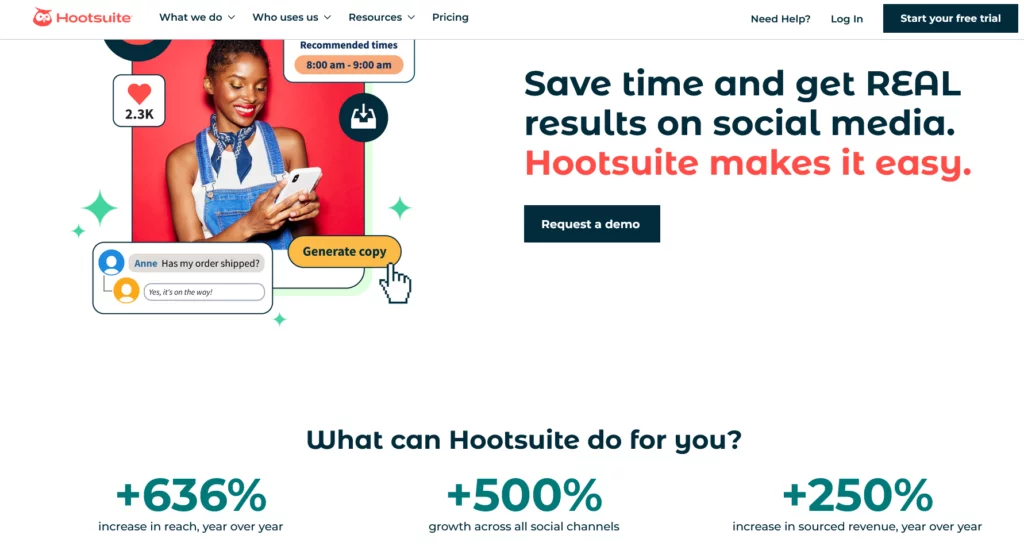
Hootsuite is a comprehensive social media management platform equipped with features tailored for managing and responding to online reviews. It allows businesses to monitor multiple review platforms and respond to feedback from a unified dashboard. Hootsuite’s scheduling and automation features simplify the process of engaging with reviews.
ReviewTrackers is a specialized review management platform that caters to businesses looking to collect, manage, and respond to reviews effectively. It offers advanced reporting and analytics features, enabling businesses to gain insights into customer sentiment and identify areas for improvement.
Best Practices for Managing Google Reviews
1. Encourage Positive Reviews
Encouraging satisfied customers to leave positive reviews can be a powerful way to bolster your online reputation. Consider the approach taken by Apple:

Apple: The tech giant encourages positive reviews by including a prompt on their devices asking users to rate and review their products. This simple but effective strategy ensures that a substantial number of satisfied customers leave positive feedback, helping to offset any potential negative reviews.
2. Respond to Reviews
Engaging with reviewers by responding to their feedback, whether it’s positive or negative, is crucial for maintaining a positive online reputation. An example from the hospitality industry:
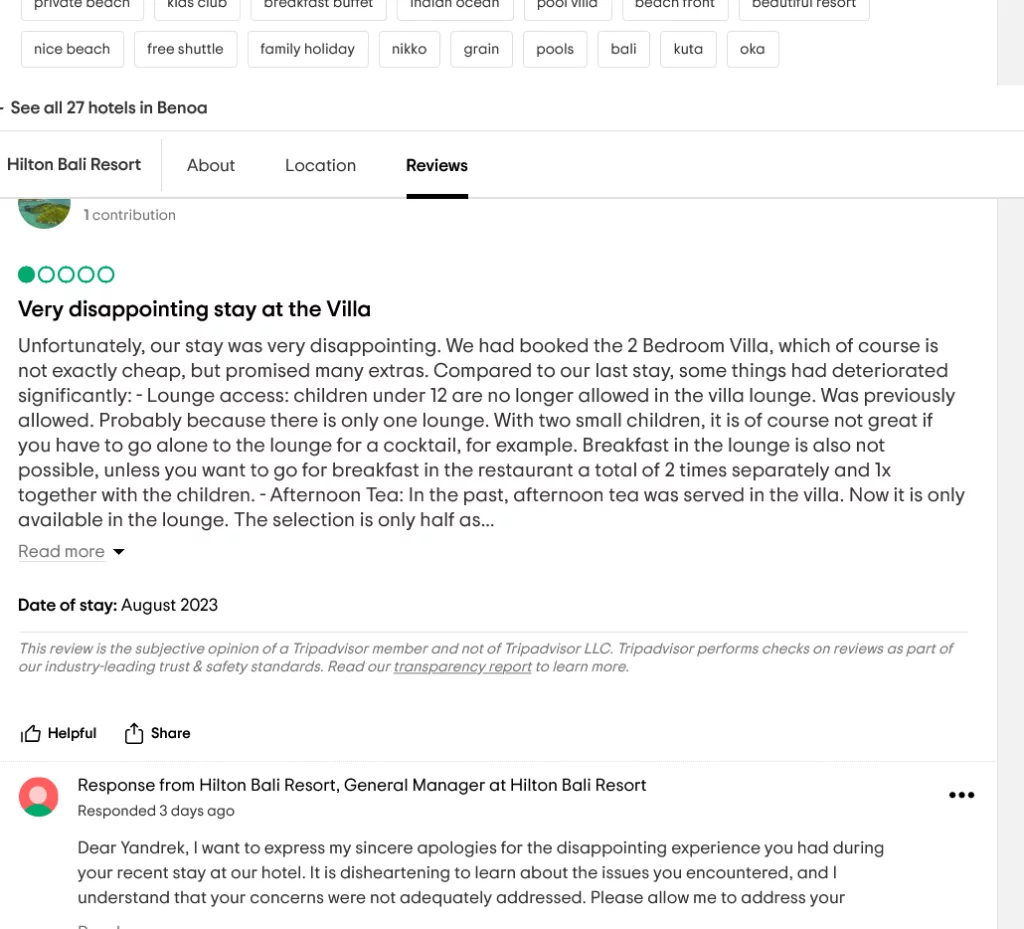
Hilton: Hilton Hotels and Resorts are known for their exemplary customer service. They respond to reviews diligently, acknowledging both positive and negative feedback. By addressing concerns professionally and offering solutions, they not only demonstrate their commitment to customer service but also show potential guests that they value their experience.
3. Learn from Feedback
Using the feedback from reviews as a valuable source of information to improve business operations is essential. An example from the world of e-commerce:
Zappos: Zappos, an online shoe and clothing retailer, actively encourages customer feedback through reviews. They’ve used this feedback to refine their inventory, improve product descriptions, and enhance their customer service. Zappos is a prime example of how listening to customer feedback can lead to continuous improvement.
Handling Fake or Malicious Reviews
1. Identify Genuine vs. Fake Reviews
Distinguishing between genuine and fake reviews is crucial for maintaining the integrity of your online reputation. Consider the approach taken by TripAdvisor, a platform heavily reliant on accurate reviews:

TripAdvisor: TripAdvisor employs a sophisticated algorithm that identifies and flags suspicious reviews. They look for inconsistencies in language, timing, and patterns. Their efforts help ensure that their platform remains a trusted source of genuine reviews for travelers.
2. Reporting Fake Reviews
Reporting fake reviews is a necessary step to ensure the credibility of your online reviews. An example from the world of local businesses:

Yelp: Yelp has a robust system for reporting suspicious reviews. Business owners can report and provide detailed evidence of fake reviews, which Yelp’s support team investigates. This process helps maintain the authenticity of the platform and its reviews.
Enhancing Customer Satisfaction
1. Implement Customer Feedback
Leveraging feedback from reviews to implement changes and enhancements is a valuable strategy. A notable example from the food industry:

McDonald’s: McDonald’s often uses customer feedback from reviews to make improvements. For instance, they made changes to their menu items based on customer demand, and this led to the introduction of items like all-day breakfast.
2. Customer Satisfaction Surveys
Conducting customer satisfaction surveys can provide a proactive approach to addressing issues before they become public negative reviews. An example from the airline industry:

Delta Air Lines: Delta regularly sends out post-flight surveys to gather direct feedback from passengers. This proactive approach helps them identify and address any concerns promptly, ensuring a higher level of customer satisfaction and loyalty.
3. Loyalty Programs and Incentives

Rewarding loyal customers with incentives can encourage them to leave positive reviews and strengthen their connection with your brand. A classic example from the world of e-commerce.
Amazon: Amazon’s Prime membership is a prime example of a loyalty program that not only offers benefits like free shipping but also encourages customers to leave reviews in exchange for early access to deals and discounts. This strategy enhances the online shopping giant’s reputation and customer loyalty.
The Importance of Consistency
1. Consistent Responses
Maintaining consistency in your responses to reviews is essential for projecting a professional and customer-centric image. Here’s an example from the hotel industry:

The Ultimate 2023 Guide To Elevating Guest Satisfaction
Marriott International: Marriott properties worldwide maintain a consistent tone and messaging in their responses to reviews. Whether it’s a Marriott in New York or Tokyo, they demonstrate their dedication to excellent customer service, reinforcing their brand image across the globe.
2. Consistent Quality
Consistency in the quality of products and services is paramount. A renowned example from the world of fast food:
McDonald’s: McDonald’s is known for the consistency of its menu items. Whether you order a Big Mac in New York or Paris, you can expect the same taste and quality, which has contributed to their global success and reputation for uniform quality.
Conclusion
Online reviews are a vital aspect of a business’s online presence. They significantly influence customer perceptions and drive business success. While turning off Google reviews is an option in specific situations, it should be considered with utmost care. Businesses must fully grasp the potential consequences and diligently explore alternative methods before deciding to disable reviews. Ultimately, mastering online reviews and maintaining a positive online reputation is a delicate balancing act.
FAQs on Turning Off Google Reviews:
1. Is it possible to turn off Google reviews completely for my business?
No, Google does not offer an option to turn off reviews entirely. You can only manage and respond to reviews, report inappropriate ones, or disable individual reviews if they violate Google’s policies.
2. Can I delete or edit a negative review on my Google My Business listing?
You cannot directly delete or edit a review left by a user. However, you can report a review to Google if it violates their policies, and Google may choose to remove it after review.
3. What are the consequences of turning off Google reviews?
Disabling Google reviews may lead to potential customers wondering why reviews are not visible. It can raise suspicion and affect trust. Moreover, turning off reviews means missing out on constructive feedback that can help improve your business.
4. How can I deal with fake or spammy reviews on my Google My Business page?
To address fake or spammy reviews, you can report them to Google. Google will review the report and may choose to remove reviews that violate their policies. Additionally, you can publicly respond to clarify the situation or address concerns.
5. Are there any third-party tools or plugins that can help me manage Google reviews more effectively?
Yes, there are several third-party tools and plugins, such as Mention, Hootsuite, and ReviewTrackers, that can assist in monitoring, managing, and responding to Google reviews efficiently. These tools can help streamline the review management process.



